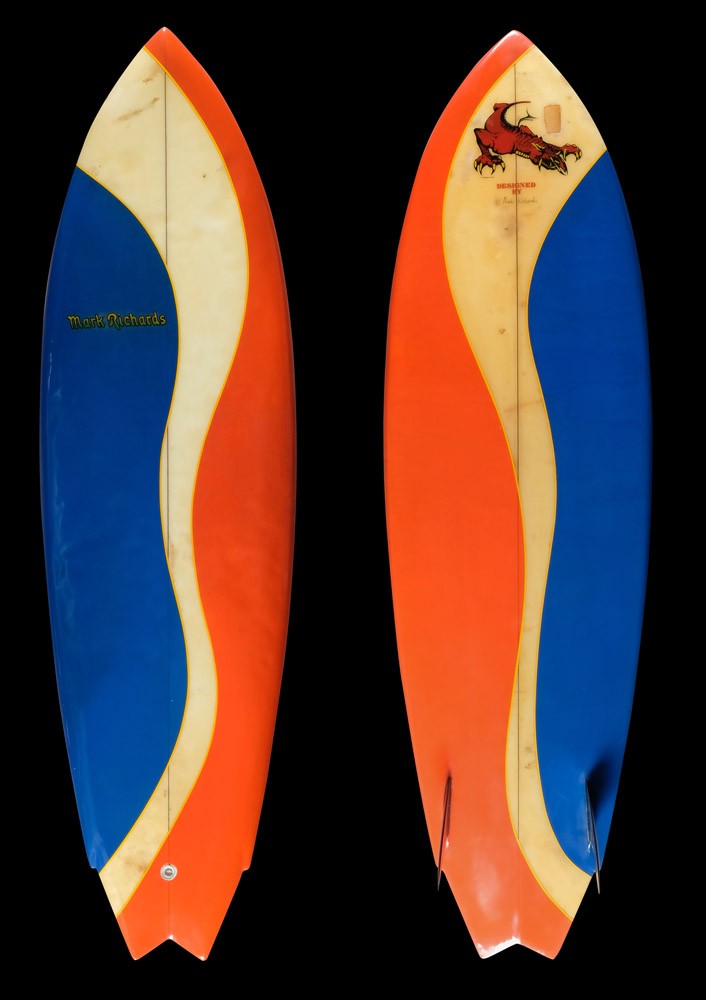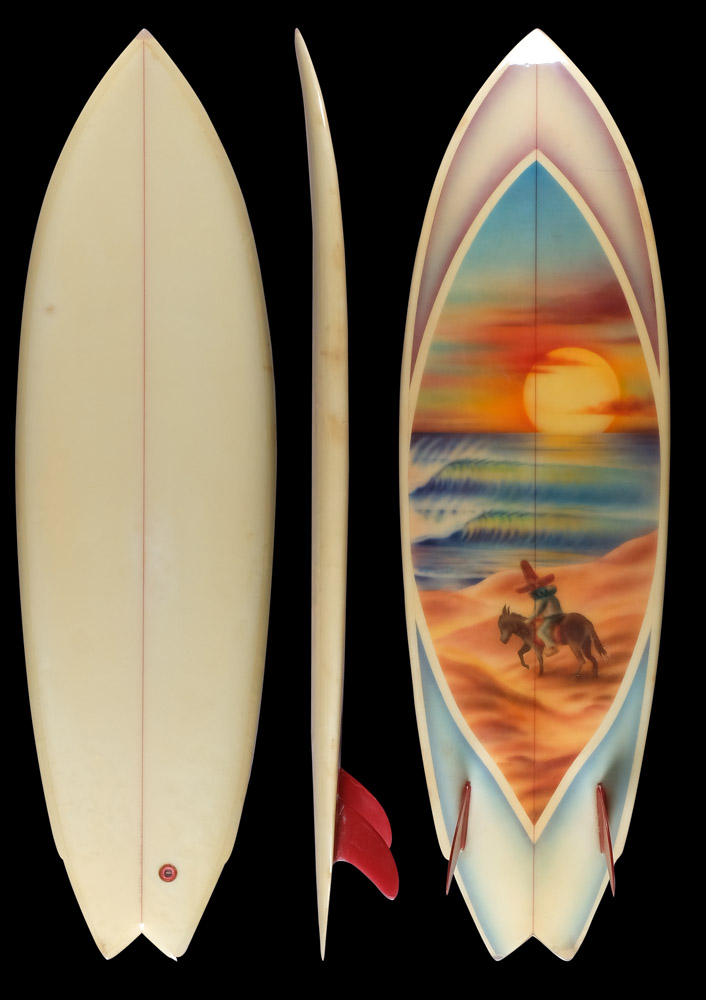Wayne Winchester / Western Australia

Wayne Winchester has been making, collecting and restoring surfboards since 1972. He is widely regarded as a master craftsman in vintage surfboard restoration and operates his current business on the south coast of Western Australia, between Albany and Denmark.
Who are you? Where are you living?
My name is Wayne Winchester and I live on a 60 acre property adjoining the south coast of Western Australia, between Albany and Denmark.
When and how did you start collecting?
You could say that I have been a collector from when I started making surfboards in the early 70’s. Customers would often trade boards in on a new one and I just kept getting a bigger and bigger pile in the corner of the shed. I wasn’t really into on-selling them and couldn’t bring myself to throwing anything away. I didn’t really think I was ever going to be a collector, but over the following decades of making boards and trading in old ones, I started to realize I was getting quite a nice collection of special boards. It’s amazing what 40 or so years of sitting in the corner collecting dust can do to the value of a board. Over the past 10 years I’ve curated the collection into a travelling exhibition called “Evolution of the Surfboard”. I’ve purchased special boards to add to the collection and to fill in some of the evolutionary gaps.
Which was the first board of your collection?
I honestly couldn’t remember the first board I ever collected, but I do recall a very early trade that was pretty special. It was a beautiful bright yellow 1969 Cordingley 8’4” diamond pintail tracker with an amazing swept back Greenough style fin. It belonged to an older gent who was around 70 at the time and still surfing regularly. He was starting to have trouble catching waves and getting to his feet, so I made him a board that had a bit more width through the tail, more volume, less rocker and a flatter bottom. He was stoked with the new board and so was I… the yellow Cordingley is still a prized board in my collection.
How many boards do you have?
At the moment I have around 150 boards and about 90 are of a quality and standard that I’m happy to have as part of the exhibition. The others are still works in progress or destined to stay in the corner for another 40 years. I’m always adding to the collection, but find it difficult to let any go. I feel very fortunate that I have a surfboard manufacturing background that spans back nearly 50 years, so when it comes to restoring the old boards, I have the techniques, materials and craftsmanship to keep the restoration work as authentic as possible.
Which is now your most preferred board?
I have lots of favorite boards… picking one would be like choosing a favorite child… you just don’t do it. I love all the boards for different reasons, some for their evolutionary design importance, some for the provenance that comes with them, some for a personal attachment or the way they ride, but often just because they are beautiful pieces of art, craftsmanship and engineering.
Are you surfing your vintage boards?
Every now and then some of them disappear for a bit of saltwater therapy. I’m not overly precious about my vintage boards and I want people to see them, feel them and sometimes ride them. Surely that is the greater joy for a surfer and for the board itself, than to have it tucked away in a shed or hung on a wall for display only… never to be touched or feel saltwater running through its veins ever again.
Which one do you like to surf most?
The feeling you get from surfing a board from another era is pretty special. They all ride very differently and you have to adapt your surfing significantly to get the best out of them. I love the glide of the old boards and especially the fluid movement of the single fins.
Who is your favorite surfer from the 60’s-90’s and why?
I really couldn’t pick out a single favorite. I grew up as a 70’s surfer in Australia, so I guess I would gravitate towards that generation… Michael Peterson, MR, Rabbit, Kanga and then of course Simon Anderson. The Hawaiian surfers were also such a huge influence… Gerry Lopez, Larry Bertlemann, BK and the list goes on. I held them all in such high esteem for not only what they were doing in the water, but the way they were pushing the boundaries of surfboard design evolution. We based our surfing and surfboard designs around what we saw in the magazines and the movies. It was a great era to be involved in, surfing and surfboard designs were changing so radically from the late 60’s to the early 80’s. I was stoked to be making boards during that period, there was so much experimentation it was crazy… but awesome when it all came together.
Who is your favorite shaper from the 60’s-90’s and why?
Once again, I wouldn’t say I have a favorite shaper, but I really respected the Australian surfer/shapers that were pushing the limits of performance and design on boards they were making themselves. MR for his twin fins and Simon Anderson for adding another one were simply an amazing revelation in the late 70’s to early 80’s. I couldn’t get into the shaping bay quick enough to try and copy these 2 design innovations that changed surfing forever. The first thruster I ever made had 3 fin boxes because I didn’t really know exactly where the fins should be, so the thinking was to leave room for adjustment!!! I was never a mainstream commercial shaper, but I had my loyal band of surfers who were only too willing to act as test pilots for these new designs… it was great times and so exciting to be a part of.
Where can we see your boards?
The exhibition boards can be seen on my website under the “collection” section. There’s lots of other stuff on the website, including photos of restorations in progress and shots around the workshops. The “Evolution of the Surfboard” travelling exhibition is becoming logistically harder and harder to organize so I’m currently looking at setting up a permanent gallery and exhibition space, likely along the south coast of Western Australia in the vicinity of Denmark. I want it to be as interactive as possible, where visitors can run their hand down the rail of a board and get a true feel for the different eras by actually handling a variety of boards. I would also like to have windows into the workshops so that visitors can understand what goes into making and restoring the boards. My hope for the exhibition is to also take visitors on a journey through the history of surfboard design and the subculture that surfing has represented throughout the decades.
Last words:
Surfing nurtures the mind, body and soul. To be in tune with nature and the rhythm of the ocean defines our very being. I believe the true essence of surfing is all about change, discovery and the magic feeling of riding waves… and without the surfboard… none of this is possible. Enjoy them as not just a vehicle to ride waves, but for their beauty, craftsmanship and design evolution.
Webpage: surfboardresto.com
Instagram: waynesurfboardresto
Categories





















